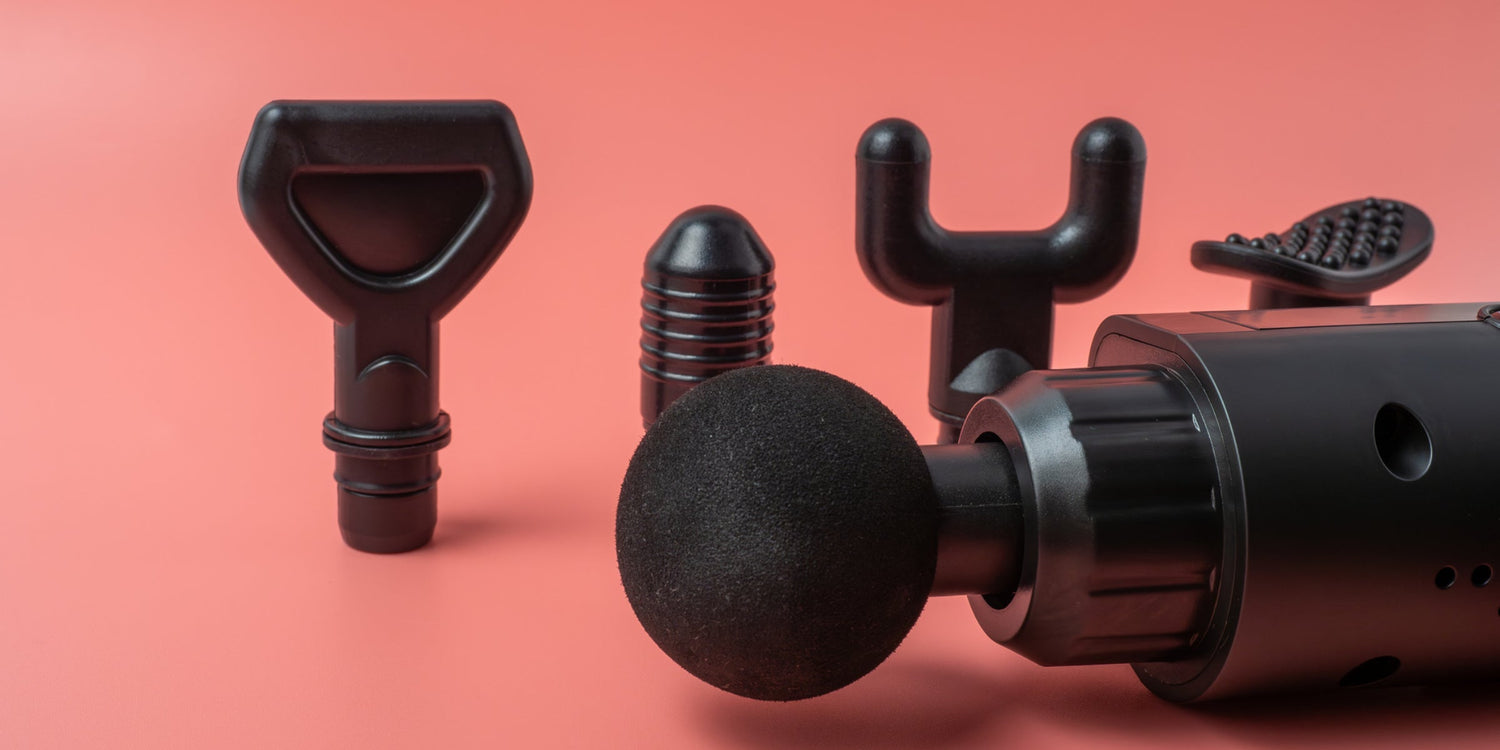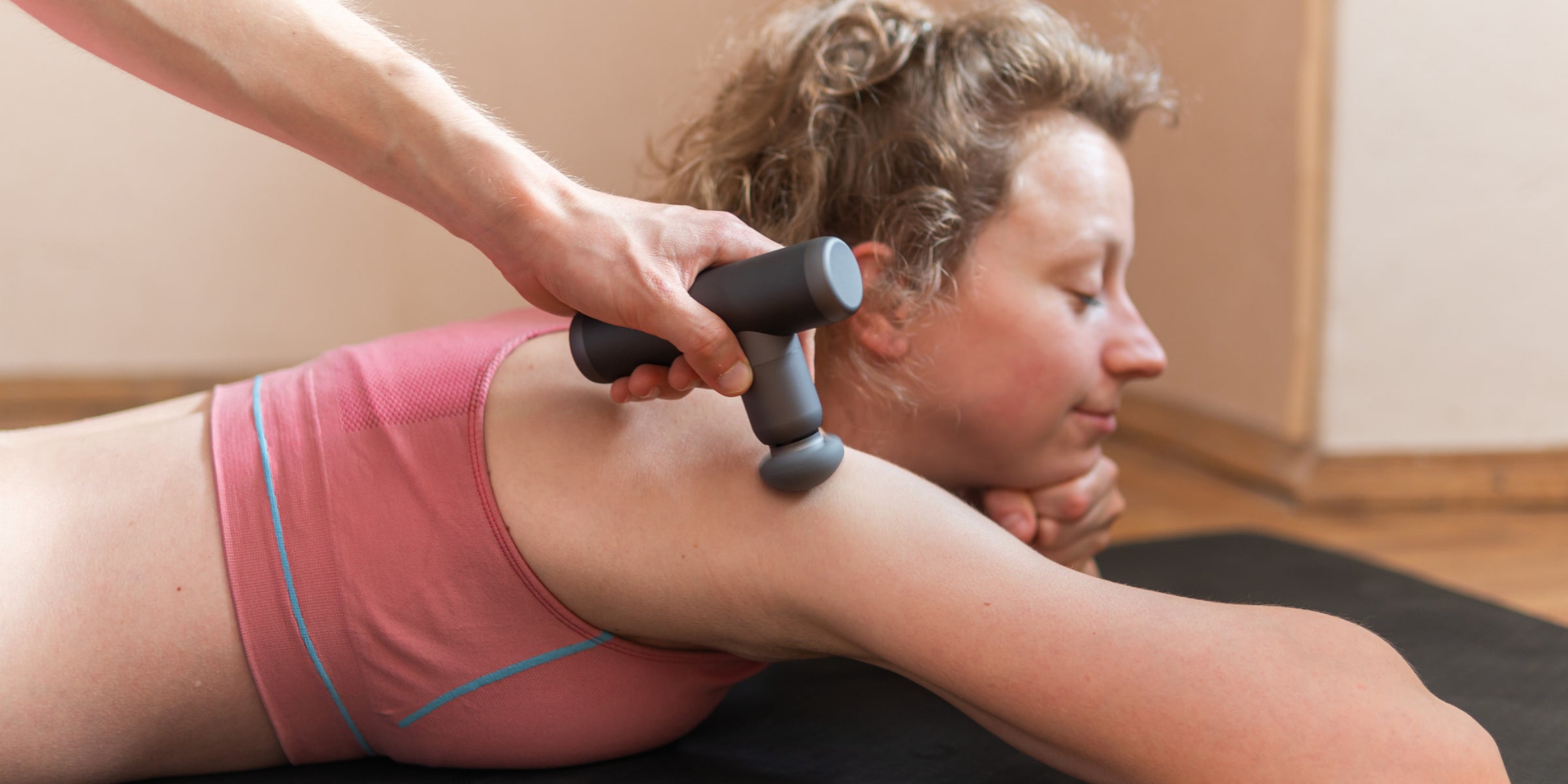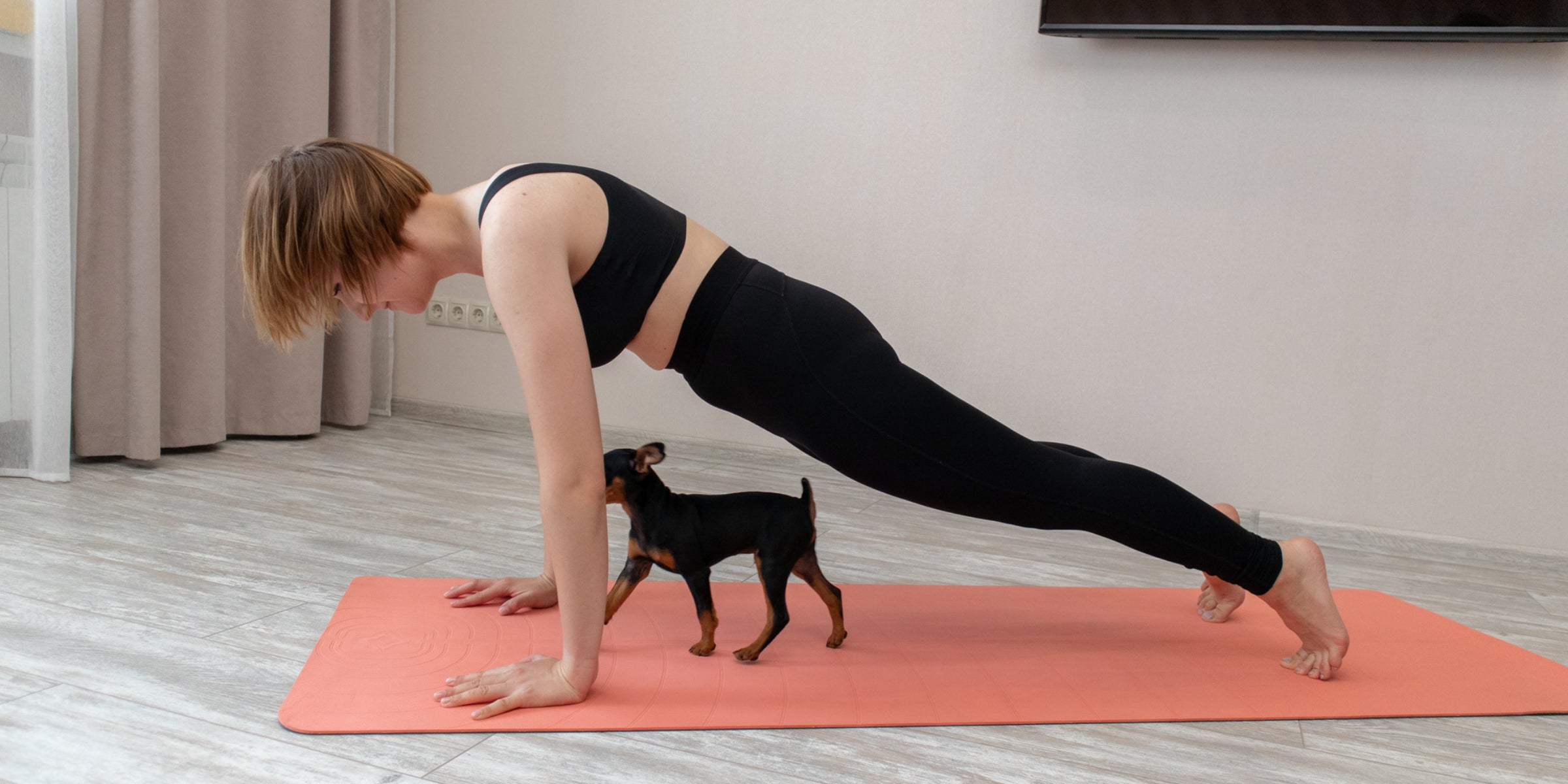Can a Massage Gun Really Help Diminish the Appearance of Cellulite?

Stay tuned to our latest news
If you're like many people struggling with the appearance of cellulite, you've probably tried every cream, lotion, and treatment under the sun to try and smooth out those pesky dimples. From expensive spa treatments to DIY remedies, the quest to get rid of cellulite can feel endless.
But what if there was a tool that could make a noticeable difference in the look of cellulite - and it didn't require breaking the bank? Enter the massage gun. These percussive massage devices have skyrocketed in popularity in recent years, and many users claim they can help diminish the look of cellulite.
So, is there any truth to the hype around massage guns and cellulite reduction? Let’s discover how massage guns work, explore the potential benefits for cellulite, and give you a better idea of whether investing in a massage gun could be worth it for your skincare routine.
What Is Cellulite?

Cellulite is a common cosmetic concern that affects millions of people, predominantly women, regardless of age or body weight. This condition refers to the dimpled or lumpy appearance of the skin, commonly found on the thighs, buttocks, and abdomen. Despite its prevalence, cellulite remains a source of frustration and embarrassment for many individuals.
Why Is Cellulite a Common Concern?
The causes of cellulite can vary widely and are often multifactorial. Genetics play a significant role, as some individuals are more predisposed to developing cellulite due to the structure and distribution of their fat cells and connective tissue. Hormones also play a role, as fluctuations in estrogen levels can contribute to the development of cellulite. Additionally, lifestyle factors such as diet, exercise, and smoking can influence the appearance of cellulite. Poor circulation and a sedentary lifestyle can contribute to cellulite formation, while a healthy lifestyle and exercise can help reduce its appearance.
The psychological implications of cellulite can be significant, as it often prompts feelings of self-consciousness and a negative body image. Many people with cellulite may feel ashamed or embarrassed about their appearance, leading to a decrease in self-esteem and confidence. The media and society's hyper-focus on achieving flawless, smooth skin can exacerbate these feelings, creating additional pressure to conform to unrealistic beauty standards.
It is important to note that cellulite can affect both men and women, although women tend to be more prone to it due to differences in fat distribution and connective tissue structure. However, societal pressure and beauty ideals often disproportionately target women, leading to greater concern about cellulite among female individuals.
What Causes Cellulite?
While the exact cause of cellulite is not fully understood, several factors contribute to its formation.
One of the main causes of cellulite is the accumulation of fatty tissue beneath the skin. This occurs when fat cells enlarge and push against the skin, resulting in the characteristic dimpled appearance. In addition to fatty tissue, inflammation also helps develop cellulite. Inflammatory processes can weaken the connective tissue under the skin, making it more prone to structural changes.
Collagen loss is another significant factor contributing to cellulite formation. Collagen is a protein that provides strength and elasticity to the skin. As we age, collagen levels naturally decline, leading to a loss of firmness and increased susceptibility to cellulite.
Poor lymphatic drainage can also contribute to cellulite development. The lymphatic system helps remove waste and toxins from the body, but when it becomes sluggish or inefficient, it can lead to fluid retention and cellular buildup, worsening the appearance of cellulite.
Hormones are believed to have a significant influence on cellulite development. Estrogen, in particular, may play a role by reducing blood vessel flow and impacting the structure and function of connective tissue.
Furthermore, poor circulation can contribute to the formation of cellulite since it can impair the delivery of nutrients and oxygen to the skin, further weakening the connective tissue.
What Are Some Common Treatments for Cellulite?

Cellulite, the dimpled appearance of skin typically found on the buttocks and thighs, can be a cosmetic concern for many individuals. There are various treatments available to reduce the appearance of cellulite, each with different levels of effectiveness and limitations.
Topical creams are a widely used treatment for cellulite. Many of these creams contain ingredients such as caffeine or retinol, which are believed to increase blood flow and improve the appearance of cellulite. However, the effectiveness of these creams varies, and results may not be significant or long-lasting.
Massage techniques, such as manual massage or lymphatic drainage massage, are often used to reduce cellulite. These techniques aim to break down fat cells and improve circulation. While massage can help temporarily improve the dimpled appearance of skin, the results may be short-lived and require regular sessions for maintenance.
Invasive procedures, such as laser therapy or radiofrequency treatments, are more intense interventions for cellulite. These procedures work by heating the skin and breaking down fat cells. They can provide noticeable improvements in the appearance of cellulite, but multiple sessions may be necessary, and the cost can be prohibitive for some individuals.
Can Massage Guns Help Reduce Cellulite?

Aside from the treatment options mentioned, one emerging trend in the world of beauty and wellness is the use of massage guns as a potential solution for reducing cellulite.
First, the deep massage action of a massage gun can increase blood flow and lymphatic drainage in the treatment area, helping to transport excess fluid and toxins out of the cellulite-prone zones. Additionally, the pressure and vibration of a massage gun may help break up the fibrous bands of connective tissue that contribute to the uneven appearance of cellulite over time. Finally, the massage gun's effects may prompt fat cells to release some of their contents, temporarily reducing the "lumpy" look of cellulite.
That said, massage guns are not a cure-all for cellulite. Their effects are often temporary, and consistent, long-term use is required to see any noticeable improvement. Experts also caution that massage guns should not replace other evidence-based cellulite treatments like dry brushing, retinoids, and targeted strength training.
How To Use a Massage Gun for Cellulite?
To use a massage gun for cellulite, follow these step-by-step instructions:
- Attachments: Start by selecting the appropriate attachment for cellulite treatment. A flat or round attachment with a smooth surface is recommended to glide over the affected area easily.
- Settings: Turn on the massage gun and adjust the speed settings to a low or medium intensity. It's important to start slow, especially if you are new to using a massage gun.
- Pressure: Place the attachment directly on the area with cellulite. Apply light pressure to ensure comfort and avoid any pain or discomfort. Slowly move the massage gun in circular or back-and-forth motions.
- Gradually increase speed: After a few minutes, gradually increase the speed of the massage gun. However, it is vital to listen to your body and adjust the speed accordingly.
- Assess for negative effects: Throughout the session, pay close attention to your skin's reaction. It's normal to experience slight redness due to increased blood flow; however, if you notice any significant discomfort or skin irritation, reduce the pressure or stop using the massage gun altogether.
Takeaway
While massage guns have gained popularity for their potential to reduce the appearance of cellulite, their efficacy is still debated. The deep tissue massage and vibration provided by these devices may temporarily improve circulation and lymphatic drainage, as well as help break down the fibrous bands contributing to the lumpy, dimpled look of cellulite. However, the effects are often short-lived, and consistent long-term use is required to see any noticeable and lasting improvements.
It's important to note that massage guns should not replace other evidence-based cellulite treatments, such as dry brushing, retinoids, and targeted strength training. These approaches may provide more sustainable results when used in conjunction with massage gun therapy. Ultimately, while massage guns can be a useful tool in the quest to diminish cellulite, they are not a miracle cure, and managing expectations is crucial. As with any skincare or beauty regimen, patience and a holistic approach are key when aiming to improve the appearance of cellulite.
Renpho Health Tips
-

Is It Safe to Use a Massage Gun During Pregnancy? What You Need to Know
June 6, 2024
Read more >
-

Vibrant Healing: Uncovering the Power of Vibration Therapy in Rehabilitation
May 29, 2024
Read more >
-

Family Yoga Session with Your Pets: A How-To Guide
May 20, 2024
Read more >
-

Shake Off the Pain: Exploring the Therapeutic Effects of Vibration Therapy
May 19, 2024
Read more >
-

Mind Matters at Work: Nurturing Employee Well-being in the Workplace
May 20, 2024
Read more >




